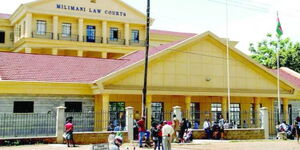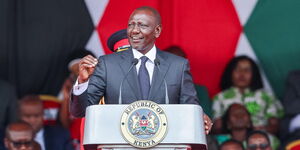Kenya has been ranked among the countries whose governments are positively addressing education needs in public schools.
A report published by research firm Afrobarometer titled Assessing the Gaps pointed out that Africans are increasingly looking for greater progress in education.
The survey conducted between 2021 and 2023 ranked Zambia (82%), Tanzania (82%), Sierra Leone (75%), Benin (68%), Seychelles (68%), and Ethiopia (68%) ahead of Kenya while Botswana (60%), Mali (59%) and Mozambique (57%) closed the list of the top 10
The study states that 65% of Kenyans are satisfied with the gains the Kenya Kwanza administration has made in the field of education so far.
"Assessments are overwhelmingly favourable in some countries, led by Zambia (82 per cent), Tanzania (82 per cent), and Sierra Leone (75 per cent). At the other extreme, fewer than one in four citizens think their government is doing a good job on education in Sudan (16 per cent), Gabon (19 per cent), Lesotho (21 per cent), and Tunisia (23 per cent)," read part of the report.
Afrobarometer's report also pointed out that 73 per cent of Kenyans had reported that it was either easy or very easy to obtain public school services.
The study further pointed out that 80 per cent of respondents had stated that they somewhat felt respected by teachers and school administrators.
On the flip side, 16% of the respondents reported having paid a bribe to access public school services.
"Having to pay a bribe to obtain a public school service is twice as common among citizens experiencing moderate (21 per cent) or high (23 per cent) levels of lived poverty than among their well-off counterparts (11 per cent). Respondents with no formal schooling (22 per cent) are slightly more likely to report having to pay a bribe than those with primary education or more (18 per cent-19 per cent)," read the report in part.
Ease of Access to Education
As far as ease of access to schools is concerned, the report noted that 8% of respondents in rural areas and 1% in urban areas reported not having identified a school within easy walking distance.
Meanwhile, 73 per cent of respondents reported experiencing an easy or very easy time accessing public school services while 27 per cent indicated that it was difficult or very difficult.
Further, the report pointed out that 22% of Kenyan respondents reported having attained post-secondary education, while 41 per cent have secondary education. Similarly, 33 per cent and 4 per cent have primary and non-formal education respectively.
Continental Outlook
According to the report, the younger citizens in most African countries are more educated than their elders. However, women, the poor and rural residents were disadvantaged in accessing education.
Kenya (32 per cent) and Tanzania (26 per cent) were among the five countries with the least number of out-of-school children. Other countries were Ghana (31 per cent), Burkina Faso (30 per cent) and Mauritius (22 per cent).
"The perception of out-of-school children as a widespread issue is the majority view in 17 countries, reaching as high as 83 per cent in Liberia and 71 per cent in Angola. Only six countries record fewer than one-third of citizens who share this view," read part of the report.
Per the report, a large number of adults found it easy to obtain the needed services and were treated with respect however, some were forced to pay bribes.
According to the report, 82 per cent of Tanzanian citizens were satisfied with how the government was contributing to the education sector. The other 18 per cent remarked that there is much room for improvement.
Notably, the government has invested in the sector to ensure each child gets a quality education. In January, the National Treasury disbursed Ksh31.34 billion for school capitation.












